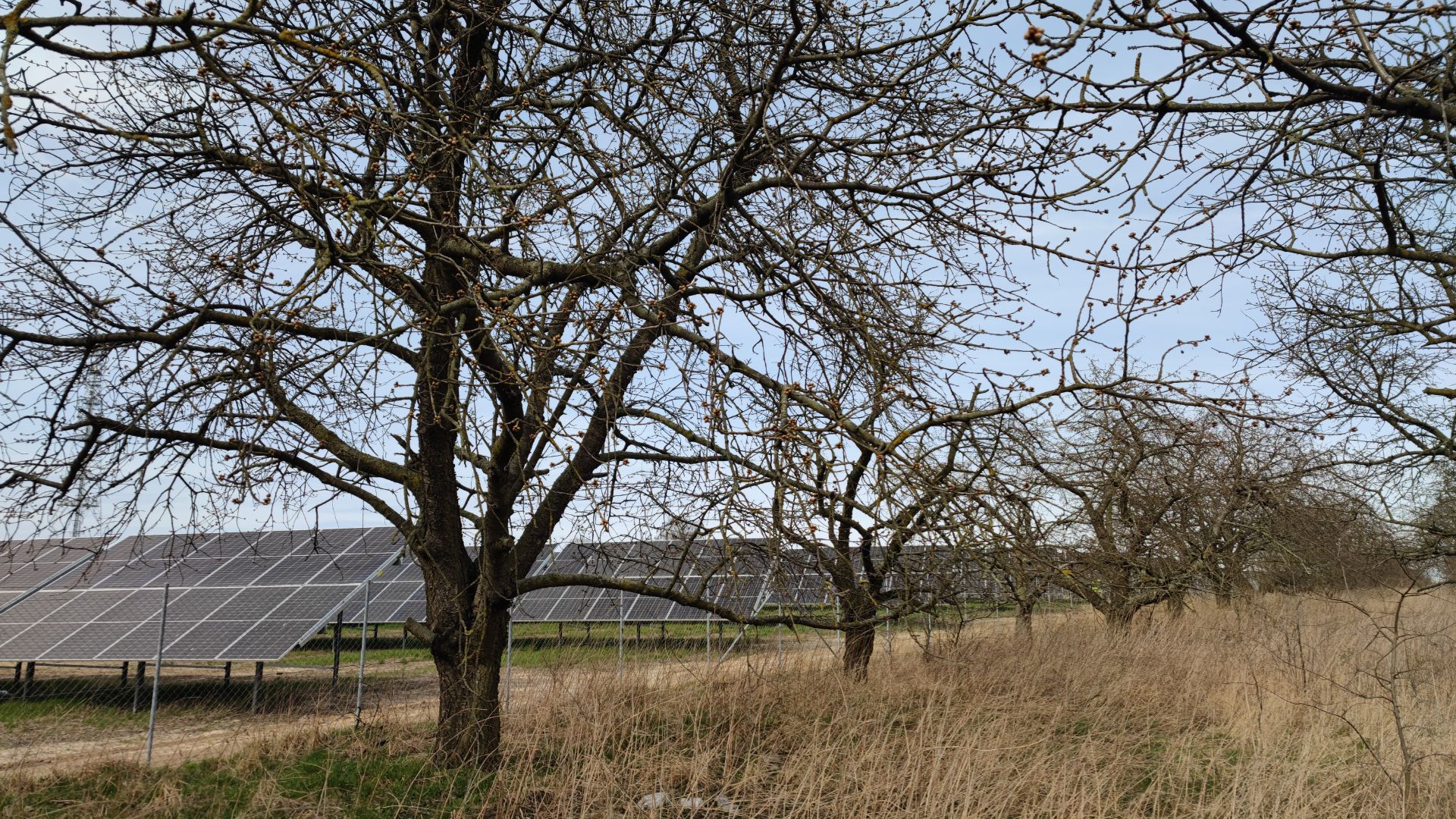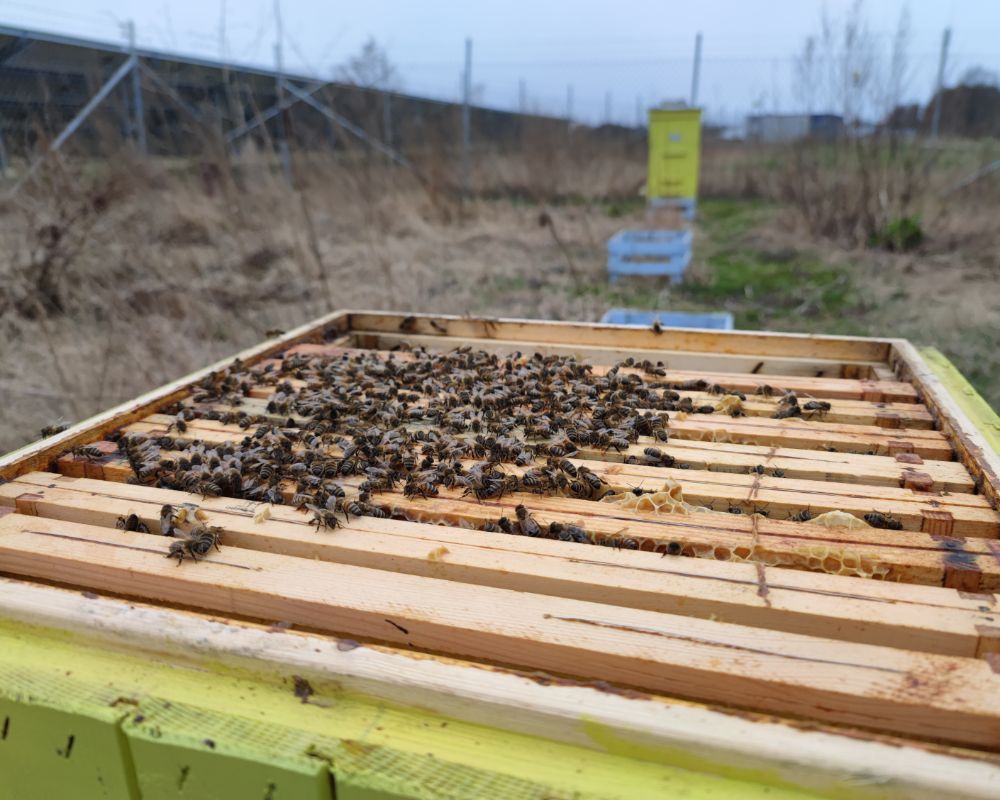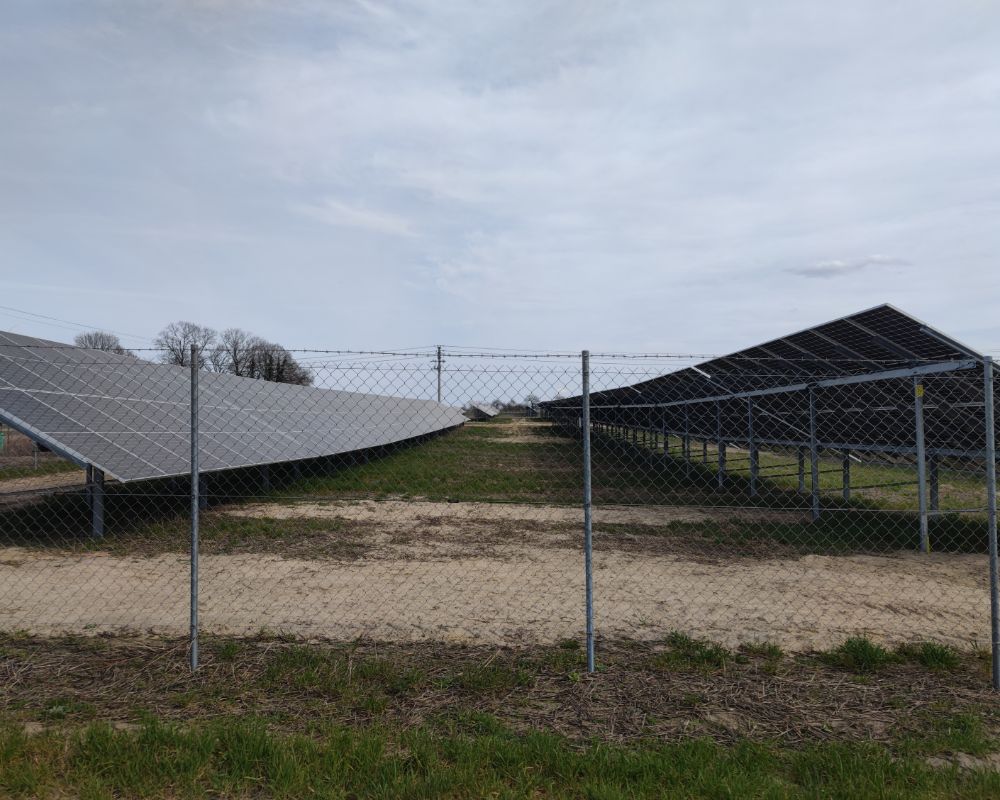- Polenergia Group
- Environment
- Society
- Management
Does energy production on photovoltaic farms involve negative impacts on the natural environment? No, on the contrary! Nature monitoring carried out on large-scale photovoltaic farms belonging to the Polenergia Group shows that the areas that have been covered with solar panels are characterized by higher natural richness than before. The measures we are taking further enrich the biodiversity of the area around the photovoltaic installations and strengthen the ecosystem services of the multi-hectare acreages.

Polenergia’s first photovoltaic projects in the Sulechow area were commissioned in 2019. They were built on land that, although intensively used, was not that attractive as an agricultural area. They were open, monoculture crops, interspersed with a few land drainage ditches and two small artificial ponds. The basis here was segetal, ruderal habitats typical of the initial stages of overgrowth. The species composition of such communities was built primarily by spontaneously appearing grass species and a mosaic of floral species with low soil requirements, e.g., birdsfoot trefoil, anaerobic marigold, common ranunculus, common chamomile. However, a lot has changed since the installation of photovoltaic panels. On the plus side for nature.
For technological reasons (spacing between rows, access roads), the structures consisting of 30,000 PV panels with a total capacity of 8 MW occupy only half of the entire more than 16-hectare area of the Sulechow I investment. Therefore, already in 2020 we decided to return the undeveloped land to nature and create so-called “honey meadows” in the area of the farms.
In April 2022, after the completion of the next units of Sulechów II and Sulechów III Photovoltaic Farms, further flower meadows and pasture mixes were sown on an area of 40 hectares. The land use diversification we have introduced results in a higher species richness of the habitat. From pasture communities with clover, alfalfa and phacelia crops, to rich floral meadows made up of a composition of 20 different species of flowers and perennials. In this way, Polenergia not only generates green energy, but also contributes̨ to the creation of a multi-hectare acreage that enhances local biodiversity and provides a food base for wild pollinators. Our farm is also a refuge and breeding ground for many species of birds and mammals, including strictly protected species.
Thanks to wildlife monitoring conducted in the winter of 2021-2022, we know that 6 species of mammals have been found in the Sulechów Photovoltaic Farms area, including partially protected weasels, as well as hares, partridges and foxes. Ornithologists have confirmed the presence of as many as 30 species of birds. Among them, 4 species are under partial protection, 26 are strictly protected, including 2 species listed in Annex I of the Natura 2000 Birds Directive. Among the most abundant are buzzards, buzzards, thrashers and kestrels.
Monitoring indicates clearly higher activity of birds of prey within the farm boundaries, relative to the adjacent open agricultural land. This is probably due to the relatively high density of rodents and low vegetation, which increases hunting success. Within the boundaries of the photovoltaic farms, very numerous burrows and corridors of rodents, feeding grounds of moles, and tracks and droppings of foxes and weasels were recorded. This means that the region of our photovoltaic installations is not an isolated space to which animals have no access. On the contrary, it represents a species richness and has a potentially high impact on the region’s ecosystem.
Bees and pollinating insects are crucial to the functioning of ecosystems or food production. An obstacle to their development is intensive agriculture with pesticides and monocultures of crops. Polenergia’s efforts are aimed at increasing insect species diversity by creating a variety of development sites tailored to the needs of different insect groups.
In early 2020, Polenergia set up a photovoltaic apiary consisting of 10 hives in Sulechów. The apiary is under the constant care of a beekeeper who is familiar with the local conditions for conducting apiary management. However, we care not only for the honey bee used in apiary management, but also for other pollinating insects. In order to provide places for solitary bees to thrive, special houses, made of wood, straw and clay, have been placed in the photovoltaic farms. This will be a great place for the development of such important wild pollinating insects in the environment. In addition, during the construction of the farm we collected stones and made special mounds out of them. Mixed with reeds and branches, they will provide an excellent place for bumblebees to thrive!
Thanks to the diversified form of land use, the abundance of flowers, blooming at different times, bees and pollinating insects will have an abundance of benefits. Importantly, pollinators are safe in the area of our photovoltaic farms in Sulechow. No one will use chemical sprays or pesticides in the area.
Large-scale photovoltaic farms are the perfect place to help many animal species, and above all the pollinating insects on which our lives depend. This opportunity related to restoring grassland ecosystems and supporting biodiversity must not be wasted. That’s why we share our good practice and the results of nature observations on our photovoltaic farms. After all, the huge potential of new photovoltaic projects in Poland offers a chance to create similar enclaves of biodiversity throughout the country.



Szanowny użytkowniku, w zgodzie z założeniami RODO potrzebujemy Twojej zgody na przetwarzanie danych osobowych w tym zawartych w plikach cookies. Dowiedz się więcej.
The cookie settings on this website are set to "allow cookies" to give you the best browsing experience possible. If you continue to use this website without changing your cookie settings or you click "Accept" below then you are consenting to this.